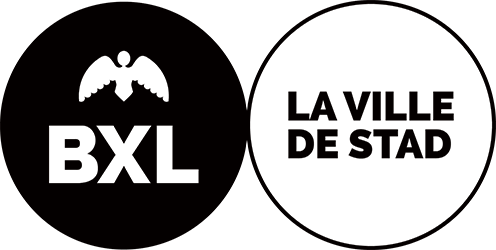
BIBLIOGRAPHY
Mandatory literature:
1. Eggebrecht, Hans Heinrich (1999a): O metodi glazbene analize, Muzika, 3, 4, 25-44. Eggebrecht, Hans Heinrich (1999b). Musik verstehen, Wilhelmshaven: Noetzel Verlag. (134f - preporuke za analizu glazbe) Fladt, Hartmut (2005). Satztechnische Topoi, ZGMTH, 2, 2-3, 186 - 195. Cook, Nicholas (1999). Analysing Performance and Performing Analysis, u: Cook, N.; Everist, M. (ur.): Rethinking Music, Oxford & NY: OUP, 239-261. Kerman, Joseph (1980). How We Got into Analysis, and How to Get Out. Critical Inquiry, 7, 311-331. Adorno, Theodor W. (1989): O problemu glazbene analize, Zvuk, 3, 29-40. 1 (MA) Stefanija, Leon (2008): Metode analize glazbe: Povijesno-teorijski ocrt, Zagreb: Hrvatsko muzikološko društvo. Bent, Ian D.; Pople, Anthony (2001). Analysis, Grove Music Online, Oxford Music Online, http://www.oxfordmusiconline.com/grovemusic /view/10.1093/gmo/9781561592630.001.0001/ omo-9781561592630-e-0000041862.
other texts used in the course
Recommended literature:
Agawu, Kofi V. (2009). Music as Discourse: Seminotic Adventures in Romantic Music. New York: OUP.
Agawu, Kofi V. (1991). Playing with SIgns: A Semiotic Interpretation of Classic Music. Princeton: Princeton University Press.
Atken, Hugh (1997). The piece as a whole. Studies of holistic musical analysis. Westport, CT: Praeger Publishers. Allanbrook, Wye J. (1993). Rhythmic Gesture in Mozart: Le Nozze di Figaro and Don Giovanni. Chicago: University of Chicago Press. Bartel, Dietrich (1997). Musica poetica: Musical-rhetorical figures in German Baroque music: Lincoln: University of Nebraska Press. Beck, Hermann (1974). Methoden der Werkanalyse in Musikgeschichte und Gegenwart. Wilhelmshaven: Heinrichhofen Verlag. Bent, Ian D. (1994). Music Analysis in the 19th Century: Volume I: Fugue, Form and Style; Volume II: Hermeneutic Approaches. Cambridge: CUP. Bergé, Pieter (ur., 2011). Musical Form, Forms & Formenlehre: Three methodological approaches. Leuven: Leuven University Press. Caplin, William (1998). Classical Form: A theory of formal functions for the instrumental music of Haydn, Mozart and Beethoven. NY & Oxford: OUP. Caplin, William (2005). On the Relation of Musical Topoi to Formal Function, Eighteenth-Century Music 2/1, 113-124. Cone, Edward T. (1968). Musical Form and Musical Performance. New York: Norton. Cook, Nicholas (2013). Beyond the Score: Music as Performance. Oxford: OUP. Danuser, Hermann (ed.) (1992): Musikalische Interpretation, Laaber: Laaber. Diergarten, Felix (2014). Musikalische Analyse: Begriffe, Geschichten, Methoden. Laaber: Laaber. Gligo, Nikša (1987). Problemi Nove glazbe 20. stoljeća: teorijske osnove i kriteriji vrednovanja. Zagreb: MIC. Grimalt, Joan (2019). Poučavanje glazbenoga značenja, Theoria 20, 11-29. Forte, Allen (1973). The Structure of Atonal Music. New Haven: Yale University Press. Hatten, Robert (2004). Interpreting Musical Gestures, Topics and Tropes. Bloomington: Indiana University Press. Hepokoski, James & Darcy, Warren (2006). Elements of Sonata Theory. Norms, Types and Deformations in the Late- Eighteenth Century. New York: OUP. Jonas, Oswald (1982). Introduction to the Theory of Heinrich Schenker. New York: Schirmer Books. Kiš Žuvela, Sanja (2011). Zlatni rez i Fibonaccijev niz u glazbi 20. stoljeća. Zagreb: Hrvatsko društvo glazbenih teoretičara. Kühn, Clemens (1993). Analyse lernen. Kassel etc.: Bärenreiter. Kühn, Clemens (1998). Kompositionsgeschichte in kommentierten Beispielen. Kassel: Bärenreiter, 251-254. Leichtentritt, Hugo (1951). Musical Form. Cambridge MA: Harvard University Press. Lerdahl, Fred & Jackendoff, Ray (1983). A Generative Theory of Tonal Music. Cambridge, MA: MIT Press. Lewin, David (1987). Generalized Musical Intervals and Transformations. New Haven: Yale University Press. Ligeti, György (1958). Pierre Boulez. Entscheidung und Automatik in der Structure 1a. Die Reihe 4: Junge Komponisten, 38-63 // (1960). Pierre Boulez: Decision and Automaticism in Structure 1a, translated by Leo Black. Die Reihe [English edition] 4: Young Composers, 36-62. Marx, Adolph B. (1894). Introduction to the Interpretation of Beethoven Piano Works. Chicago: Clayton W. Summy. Mattheson, Johann (1739). Der volkommene Cappellmeister. Hamburg: Christian Herold. Mirka, Danuta (2014). The Oxford Handbook to Topic Theory. Oxford & NY: OUP. de Momigny, Jérôme-Joseph (1806). Cours complet dharmonie et de composition. Paris: de Momigny. Monelle, Raymond (2006). The Musical Topic: Hunt, Military and Pastoral. Bloomington: Indiana University Press. Nattiez, Jean-Jacques & Dunsby, Jonathan (2000). Linguistic Models and Analysis of Musical Structures, Rivista italiana di musicologia, 35, 1/2, 379- 410. Nowak, Adolf (2015). Musikalische Logik - Prinzipien und Modelle musikalischen Denkens in ihren geschichtlichen Kontexten. Hildesheim: Georg Olms Verlag. Ratner, Leonard G. (1980). Classic Music: Expression, Form, and Style. New York: Schirmer. Ratner, Leonard G. (1991). Topical Content in Mozarts Keyboard Sonatas. Early Music 19, 615-619. Ratz, Erwin (1951). Einführung in die musikalische Formenlehre. Über Formprinzipien in den Inventionen und Fugen Johann Sebastian Bachs und ihre Bedeutung für die Kompositionstechnik Beethovens. Wien: Österreichischer Bundesverlag Reicha, Antoine (1826). Traité d haute composition musicale. Paris: Zetter. Riemann, Hugo (1893). Vereinfachte Harmonielehre oder die Lehre von den tonalen Funktionen der Akkorde. London: Augener. Rink, John (ur., 1995). The Practice of Performance: Studies in Musical Interpretation. Cambridge: CUP. Rink, John (2002). Analysis and (or?) perfeormance. U: Rink, J. (ur.). Musical Performance: A Guide to Understanding. Cambridge: CUP, 35-58. Rosen, Charles (1997). The Classical Style: Haydn, Mozart, Beethoven. NY: Norton. Rosen, Charles (1988). Sonata Forms. NY: Norton. Schenker, Heinrich (1935). Der freie Satz (Neue musikalische Theorien und Phantasien III). Wien: Universal Edition. Schuijer, Michiel (2008). Analyzing Atonal Music: Pitch-Class Set Theory and its Contexts. Rochester: University of Rochester Press.









